An attempt to expand on Brian Sanchez’s Dunswich:
The Northern Canyonlands
North of Saragar, the Burning Plains give way to more traditional scrubland, which continues, largely featureless, northward. Along the eastern coast of the silt sea, the land gradually juts upward to heights rivaling the jagged cliffs, at nearly two miles- on the plains, however, this incline is gradual. Along the west, the Jagged Cliffs rise nearly 4 miles above the Crimson Savannah, eventually merging into the insurmountable Ironcrags. The further north one travels, the cooler the temperature becomes, and the scrubland gives way to actual grasses, and expanses of heath and small bogs. This northern part of the continent is in fact a massive highland located along a rise of the continental shelf, rising miles above the old sapphire sea and crimson Savannah. While not high enough to experience snowfall, runoff from the Ironcrags fosters a cooler, dry climate- the shelf was once covered in lush, cold forests, but desiccation, defiling, and felling has reduced the woods to the foothills of the Ironcrags. The Canyonlands owe their relative lushness to the insurmountable Ironcrags,: as high-altitude moisture and cold air off the Sea of Winds hits the peaks, it results in massive lightning storms and torrential rainfall that water both western and eastern sides of the mountains. Three major rivers, the Artor, Deland, and Tannen, flow through the region at a strong pace, albeit reduced from the Green Age. The Tannen River cascades into a 2-mile deep crater filled with mist, full of verdant land and forests, before flowing into the Sea of Silt, pooling into Tannen Lake, which is surrounded by thick mudflats and marshlands. To the north, the Deland River splits from the Tannen, pooling into upper Lake Deland, and dramatically cascading two miles down into the silt of silt, pooling into lower Lake Deland, which is also surrounded by thick mutflats and marshes where the water meets the silt. The third river, the Artor, flows north from the ironcrags, pooling into Lake Artor. The continental rise of the region is split into four plateaus covered by dry moor and heath, with the massive Tannen Canyon dividing them from each other.
The Artor Moor
The scrub plains north of Saragar eventually give way to moorland, sustained by the cooler climate and higher elevation. While lush compared to the southern scrublands, the acidic soil makes it unsuitable for agriculture. The Moors are no less dangerous than other Athasian verdant climates- numerous types of predatory or parasitic algae, lichens, mosses, and oozes thrive in the acidic, relatively cool and damp environment, as well as many of Athas’ few surviving amphibians. The moor itself is sparsely populated by humans and demihumans. The southernmost settlement is Elgy, a border fort guarding the southern border of the town of Gipswich. The fort is named as such for the freshwater eels (actually cousins of Cistern Fiends) that infest Lake Artor. In addition to being a delicacy, they also function as personal water purifiers if allowed to live in water pots and basins, and are one of the region’s most valuable exports. The region around Lake Artor and Gipswich are known as the Fens due to being well-watered by runoff from the Ironcrags, creating the region’s main belt of arable land. This belt stretches north as far as Blieburc. Cool rain forests rise along the foothills of the Ironcrags to the east. The largest town in the southern fens is Gipswich, which, like other Dunswich settlements, is a strange translation of Saragar-esque Green Age systems into a modern bronze-age context.
An elected council of the Wich, or Trading Center, Bailiffs (the equivalent of Lawkeeper) representing the town clans, govern day to day affairs, and sending representatives to serve on the Reeve (Lawmaker) Council in Dunswich. Most buildings in Gipswic, lacking stone or even reliable mudbrick, build earthen and wood structures, with peat and reeds sometimes used as an alternative. Gipswich is located on the shore of Lake Artor and exports fish, lumber, and other goods. Numerous dwindling iron, gold, copper, and tin mines dot the Ironcrag foothills. The road north passes through the village of Cnobsheresburc, a lumber town, and Iceni, a fort that protects copper and tin mines along the southern rim of Tannen Canyon. The road travels north before meeting the narrow western end of Tannen Canyon. Crossing the span is a wonder of engineering, the Great Gondola. Built across remnants of a sophisticated ancient Green Age transportation grid, the Gondola is made of extremely resilient rain-forest vines and wood, which do require maintenance and replacement every few decades. Teams of Mellikots on either side draw an enclosed wooden cabin across the span along a cable- while the process is stunning and nerve-wracking, it is mostly safe, as the Mellikots are well trained and the materials of quality. And thankfully, the mists and clouds conceal any wreckage down far below. The gondolas pass by the magnificent sight of the Tannen River cascading down over 10,000 feet in a massive waterfall to the valley below.
The Raegain Moor
While a bit cooler than the Artor Moor, the Raegain is generally similar. Billows of cool air rising from Tannen Canyon fall down along the southern rim, granting enough precipitation to make the moors arable. The Raegain Fens mirror the Tannen Fens down south, providing a belt of arable land along the banks of upper Lake Deland and the Deland River. The trade road runs north of New Dunswich to the village of Blieburc, which relies on fishing and offer travel down the sheer cliff alongside the 10,000 foot cascading waterfall, down to the Deland Marshlands below. Shrouded in silt haze and mist, these dangerous mudflats and marshes are oddly silent, still carrying the taint of the ancient Blight that ravaged Dunswich. Travelling east along the arable northern edge of Tannen Canyon, the trade road passes through the village of Soham, to the town of Beodericswic. The town, similarly to Gipswic, is run by a council of clan-Sheriffs, and exports chalk mines from the cliffsides, as well as truly precious commodity- hops. Two trails cuts through the white cliffside of northern Tannen Canyon, with numerous outposts and storehouses built into caves and carved structures. These support numerous wooden and vine elevators used to haul large goods or creatures, slowly, up the cliffside. Far north, at a ruined fortress called Tun Hoh, the treasures of ancient Dunwich monarchs are said to be hidden, and guarded by fierce, shadowy undead.
New Dunswich
For millennia, the lands around old Dunswich were afflicted by the Blight, perhaps the work of the Cleansing Armies, or a final revenge of the Elves against Albeorn’s home city. Any small animal life instantly shriveled and died, and intelligent beings slowly grew sick and wasted away from some magical illness, but plant life was unaffected. Eventually even the lush northern forests withered away as the planet desertified, and intelligent life only survived clinging to the foothills of the ironcrags. But water still fell in abundance from the peaks, and through means perhaps magical, perhaps mundane, over the millennia, the rivers and rains washed away the Blight over the cliffs and into the silt and mud below. For centuries, as humans and others resettled the moors, society was dominated by warring feudal clans until their unification under a warlord who reorganized the clans under a pseudo-democratic system loosely based on the Green-Age system of Saragar. Some have said the great monarch actually came from the forbidden southern city. They established a new capital along the Deland River, naming it ‘New Dunswich’ in honor of the ancient Green Age port metropolis.
New Dunswich should be a thriving city; isolated from the deserts of the south by hundreds of miles of plains, located high above the worst effects of Athas’ defilement. It is a rare sight on Athas, a town of wood. The rich lumber of the eastern rain forests, the sort of ancient trees that thrived during the blue age, lasts for centuries, allowing new Dunwich to look more like a cheerful green age city than a mud-brick den of desperation baking in the sun. New Dunswich appears as a classical medieval town, like those bright villages of the Marnita Valley, with colorful roofs and solid construction, but there is a rot afflicting the city. The buildings seem to sag in on themselves, the townsfolk are a paranoid and secretive lot, things move in the corner of one’s eye and geometry feels off. Shadows stretch longer than they should and the life giving rains from the Ironcrags are unnaturally long and cold. This malaise seems to affect the entire land, and indeed it does, brought by an ancient curse linked to a dread son of Dunswich, Albeorn, now known as Andropinis, the Sorcerer-King of Balic. While trapped in the Black, Albeorn explored its darkest depths, and what lurked there terrified even him: squiggling things in the void between the stars, warped geometries, a Far Realm beyond even the ken of the undead and shadowy horrors of the plane. Albeorn escaped his imprisonment via a circuitous route of mindscapes and demiplanes, and something followed him back. While he arrived back in Balic, it, perhaps piggybacking on his memories, arrived in Dunswich, his ancient home. New Dunswich is a settlement of around 10,000, surrounded by high earthwork-and wood walls, and a port on the upper lake Deland. Its primary industries are beer production, sugar refinement from the eastern forests, lumber, and metallurgy, specifically smelting copper and tin into bronze.
Tannen Canyon
During the Green Age, the bottom of Tannen Canyon was filled by the Sea, but as the sea turned to silt, the inlet tried up. Over the millennia the flow of the Tannen River beat out the Silt, turning it into rich mud, and eventually life began to blossom, first scrub and grasses, then trees. While much warmer than the above moors, the valley is still quite pleasant, cooled by constant mist streaming up from the waterfalls and the shade provided by the narrow cliff walls. In addition to the great Tannen Waterfall, many smaller falls from aquifers under the moors spill out, turning the Tannen into a roaring beast at the Valley bottom, fed by numerous tributaries. The Tannen Canyon bottom has been cleansed of the lingering Blight by the constant waterflow, and as a result is some of the richest farmland in the region, and hosts several small villages: Elmham, known for its waterwheels and mills; Derehame, known for its beermaking and woodcraft; and Rendlesham, found on the edge of the great Lake Tannen and its mudflats. Rendlesham often provides services for travelers exploring the Tannen Marshlands. The base and cliffsides are heavily mined for copper and tin, the lifeblood of Dunswich, as bronze plowshares are required to farm in the fenlands.
Lowland Vale
A cool, misty valley located to the northwest of Dunswich, the Lowland Vale is a sparsely populated, densely forested valley encircled by the Ironcrags. A few small villages grow the precious plant known as Sugar and harvest rainforest plants for medicines to export to Dunswich. Most notably, a hidden mountain pass crosses the Ironcrags, into the depths of the Chuul Jungles.
Old Dunswich
Isolated on a broken plateau in the middle of Tannen Canyon, amid dry scrubland and moor, are the stone ruins of the great Green Age city of Dunswich. Founded by the Geahur people who also founded Saragar. the city was known as a great port, but largely isolated from affairs to the south, mostly trading with its mother city and the ports of Bartigar. east of Saragat, and Erasat on the Gray Isles. Dunswich frequently competed with the Ghost Elves of the west for control of the northern seas, and their rivalry colored the worldview of a young man born in the city during the Preserver Jihad, Albeorn. Albeorn eventually left for the south and never returned, and the Preserver Jihad seemed a distant squabble to the people of Dunswich. Even as Saragar cut itself off, the people of Dunsiwch seemed safe from the chaos to the distant south. Eventually the Cleansing Wars came north, as Elven counterattacks disrupted Dunswich trade and the city eventually died to a mysterious Blight that killed all animals but left the boreal forests healthy, if silent. Eventually the seas turned to silt and the forests receded, giving way to moors. and proved too acidic and dry to support crops. Survivors fled west to the fens and foothills of the Ironcrags, where their descendants clung to life for millennia onward.
Dunswich Geshur
The humans of Dunswich, like the inhabitants of Saragar and the inhabitants of the Gray Isles, are descended from the Geshur people of the Green Age, but tend to be shorter and broader than their cousins to the south, due to living on a high-elevation plateau. They tend to be ‘barrel-chested’ with higher lung capacity, and function well in the mountains that so cripple lowland Athasians. Conversely, they do badly in lowland desert. Dunswich residents speak a variant of the language spoken by those in Saragar, but after millennia the two peoples can only recognize certain shared words between their tongues. Dunswich culture is strongly influenced by the political structure of Green Age Saragar. Local villages are run by an elected mayor known as Sheriff, usually the clan leader, while larger settlements are run by a council of Bailiffs, local Clan leaders elected internally within the Clan. New Dunswich itself it run by a council of high Clan Representatives known as Reeves. While supposedly democratic, these elected roles are often dominated by the rich or landowners, or Clan favoritism. Residents of Dunswich favor very colorful dress, often unisex skirts/dresses or cloaks, and occasionally trousers and simple shoes when working. Unisex broad-brim hats and caps or fez are favored. Some Dunswich humans practice body modification and tattooing, including scarring and cranial deformation. Due to the region’s abundance of copper and tin, copper, bronze, or silver or gold for those of status, torcs are quite popular.
(Totally not blatently just the Kingdom of East Anglia with some Andean and Tibetan thrown in)
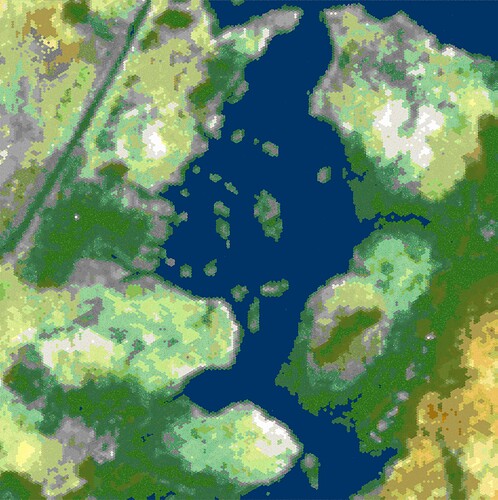
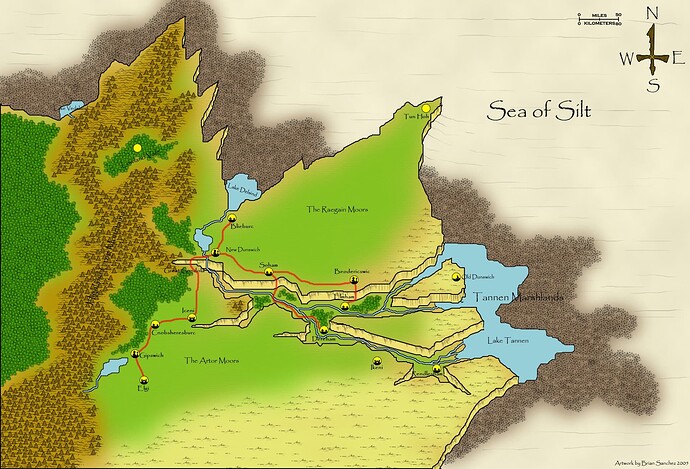
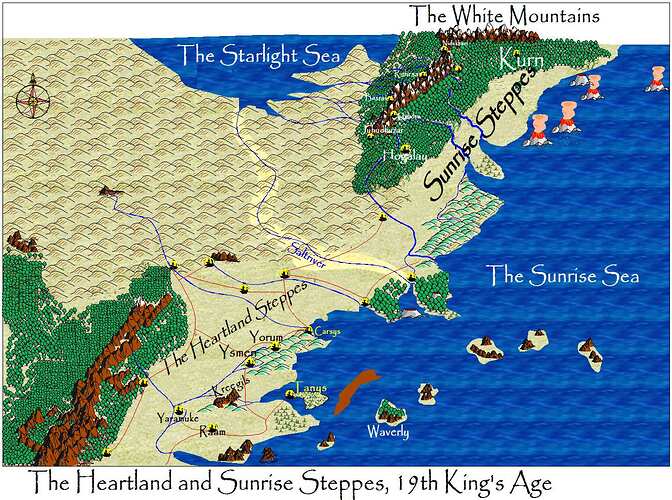
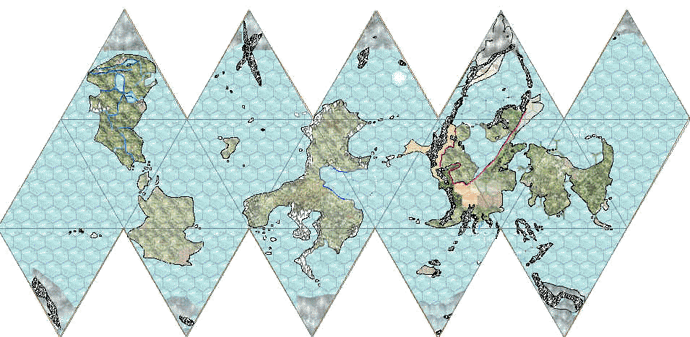
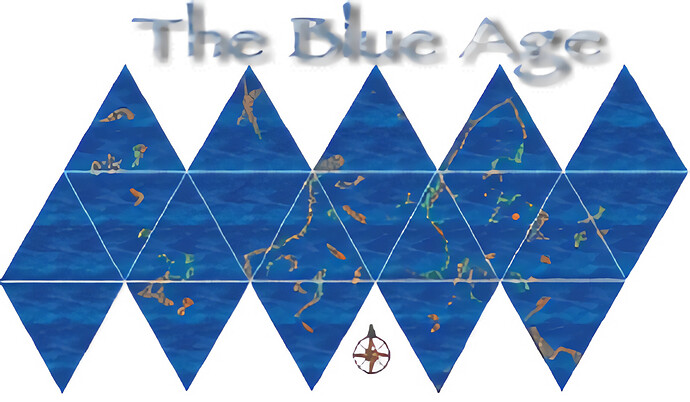
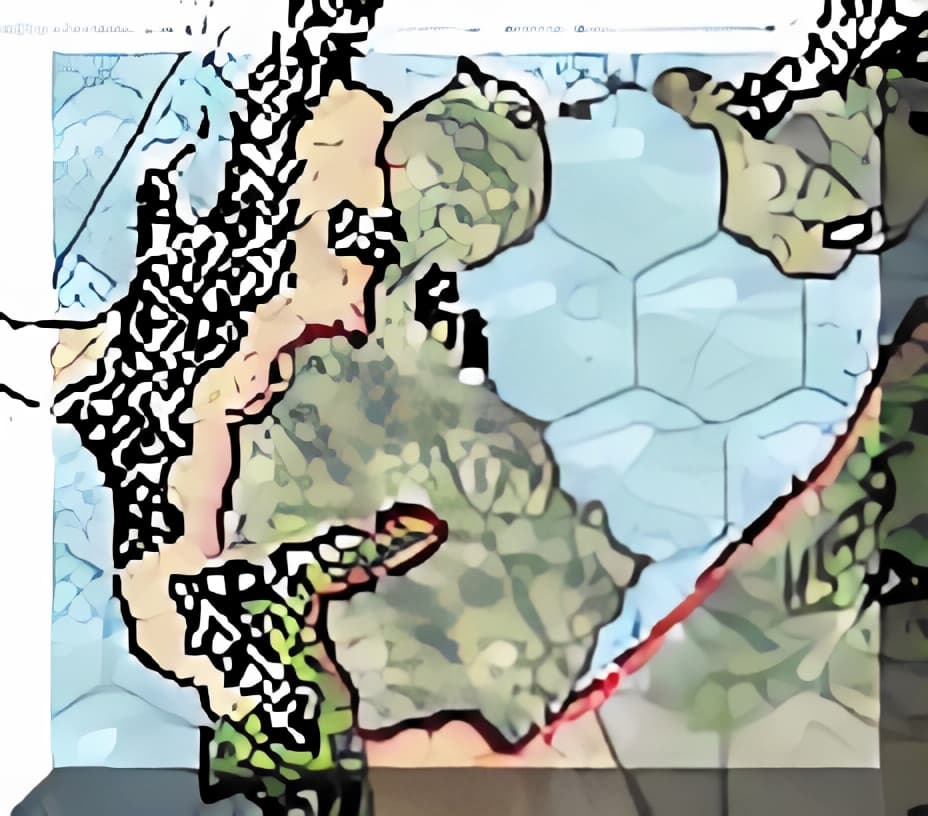

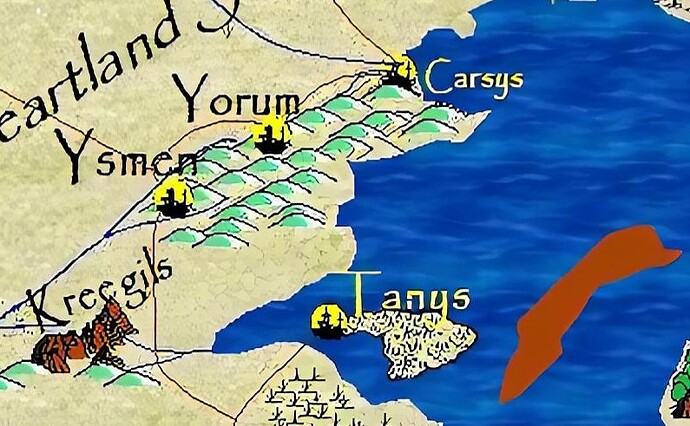
 My only personal edits were making the northern part of Faye’loryn’s forest the Scorched Forest and the southern forest on Anattan the “Meridional Forest” I’ve seen mentioned in talk about the eastern continent (ie the one that partly appears on the map for Valley of Dust and Fire"), and maybe moving around some of Sysane’s cities (like sharn being at the mouth of the northern river)
My only personal edits were making the northern part of Faye’loryn’s forest the Scorched Forest and the southern forest on Anattan the “Meridional Forest” I’ve seen mentioned in talk about the eastern continent (ie the one that partly appears on the map for Valley of Dust and Fire"), and maybe moving around some of Sysane’s cities (like sharn being at the mouth of the northern river)